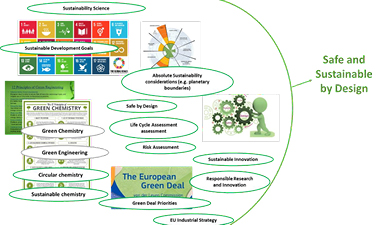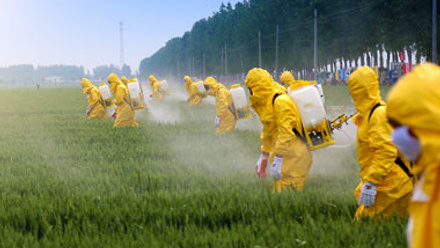Regulatory Review: July–August 2024
This digest provides an overview of some of the latest regulatory news and announcements of interest to the SETAC community. Please send your suggestions to [email protected].
Australia Department of Climate Change, Energy, the Environment and Water (DCCEEW)
The DCCEEW is inviting comments on their draft Sustainable Ocean Plan by 13 September.
Environment and Climate Change Canada (ECCC) and Health Canada (HC)
Science Approach Document for Chemical Screening and Prioritization Document Released
The government of Canada is seeking public comment on the Science Approach Document for the Chemical Screening and Prioritization: Health Canada’s Automated Workflow for Prioritization (HAWPr). The HAWPr is a modernizing decision support tool for integrating emerging science and monitoring streams of chemical information with traditionally available data for the identification of priorities for further work. The comment period ends 16 October.
Epoxides and Glycidyl Ether Substances Identified for Action Under the Chemicals Management Plan
During a screening assessment, five of 12 substances in the epoxides and glycidyl ethers group were associated with health effects of concern. Significant New Activity provisions (SNAc) were applied to Allyl glycidyl ether (AGE), o-Cresol glycidyl ether (o-CGE) and Triglycidyl isocyanurate (TGIC). SNAc provisions under the Canadian Environmental Protection Act trigger an obligation for a person to provide the Government of Canada with information about a substance when proposing to use, import or manufacture the substance for a significant new activity.
Updated State of PFAS and Risk Management Scope Documents, and Mandatory Information Gathering Notice
An updated draft State of Per- and Polyfluoroalkyl Substances (PFAS) Report and a revised Risk Management Scope for PFAS were published for a public comment period ending 11 September.
A mandatory notice under section 71 of the Canadian Environmental Protection Act, 1999, with respect to PFAS was published. The Government of Canada is collecting information for the purpose of prioritization, risk assessment and risk management. Deadline to submit is 29 January 2025.
European Chemicals Agency (ECHA)
Chromium Trioxide Applications for Authorization
ECHA is seeking expert feedback on four applications covering five uses of chromium trioxide. Feedback is due 9 October.
New Guide for the Enforcement of Mixture Classification Based on Bridging Principles
When no information or test data on a mixture is available to assist with the enforcement of a classification hazard, bridging principles can be applied. ECHA has released a guide, with practical case studies, to assist in the application of bridging principles and a weight-of-evidence determination using expert judgement.
European Union (EU)
A new Ecodesign for Sustainable Products Regulation was introduced that aims to significantly improve the circularity, energy performance and other environmental sustainability aspects of products placed on the EU market.
International Institute for Sustainable Development (IISD)
Decarbonizing the Mining Sector
The IISD and partners released a scoping report on “Decarbonization of the Mining Sector.” The report examines the mining sector's role in the global energy transition and offers several policy recommendations to support the mining sector's transition to a low greenhouse gas emission future.
National Monitoring, Evaluation, and Learning (MEL) Systems for Climate Change Adaptation
MEL systems can help countries understand how to best adapt to climate change. The IISD released a report exploring how nine countries are advancing climate adaptation through innovative MEL systems.
Avoiding Trade Concerns in the Design of Plastic Pollution Measures
The IISD released a policy brief to help policymakers avoid the possible friction that can arise when plastics-related prohibitions, restrictions and requirements differ across jurisdictions and affect trade flow. The authors give examples of where such frictions have arisen and describe and classify the issues raised. Helpful regulatory principles and practices are offered to help minimize trade frictions and ensure the smooth implementation of policy measures aimed at reducing plastic pollution.
Japan Ministry of the Environment (MOE)
The Japan MOE released guidelines for harmonizing marine litter monitoring methods using remote sensing.
United States Environmental Protection Agency (USEPA)
Release of Datafiles on PFAS Concentrations in Over 500 Precipitation Samples
Data from weekly integrated wet deposition collections (2020–2022) from National Atmospheric Deposition Program–National Trends Network sites were analyzed by LC/MS-MS for 33 ionic PFAS compounds. The data include concentrations in collected field samples as well as field blanks, triplicate samples and field spikes.
Emergency Suspension of Dimethyl Tetrachloroterephthalate (DCPA or Dacthal) and Final Cancellation of Chlorpyrifos Use
For the first time in almost 40 years, the USEPA has announced an immediate suspension of all registrations and uses of a pesticide. Evidence that exposure to the pesticide DCPA poses imminent hazard to unborn babies necessitated the emergency order. Also this month, the USEPA announced a final order terminating specific uses of the organophosphate insecticide chlorpyrifos, halting it’s use on food and animal feed. A proposed rule later this year to revoke tolerances for all but 11 food and feed crop uses will potentially reduce chlorpyrifos application in the U.S. by 70%.
Pesticide Review Will Now Protect Against Spray Drift 15 Years Earlier
The USEPA announced that the pesticide review process has been modified to include the assessment of exposure potential from spray drift in initial registration, instead of during registration review.
Public Comment Sought on Strategy to Better Protect Endangered Species from Insecticides
A draft strategy has been released wherein the USEPA identified mitigations to address the potential impacts of insecticides on federally endangered and threatened (listed) species, even before they have completed the endangered species act consultation process. The comment period closes 22 September.
Methods for Characterization of Plastics Contamination in Food Waste from Depackaging Facilities
The U.S. is committed to reduce food waste by 50% by 2030 primarily by diverting organic waste from landfills. The USEPA released a study of the effects of food waste depackaging equipment on plastics in the organic waste stream. While the machines are very good at removing organic material, plastics and polymers can remain after the depackaging process.
United Nations Environment Programme (UNEP)
The 7th anniversary of the Minamata Convention on Mercury was 16 August. The UNEP-led PlanetGOLD program is working to make the artisanal and small-scale gold mining sector safer, cleaner and more profitable. This sector, responsible for producing 20% of the world’s gold each year, is the largest source of mercury pollution in the world.
World Health Organization (WHO)
The WHO released an update to the Compendium of WHO and other UN guidance on health and environment. Environmental pollution and other environmental risks cause 24% of deaths through heart disease, stroke, poisonings, traffic accidents and more. The Compendium is a comprehensive collection of guidance and more than 500 interventions for improving health by creating healthier environments. It is designed for policymakers, staff in government ministries, local government, in-country UN personnel and other decision-makers.





